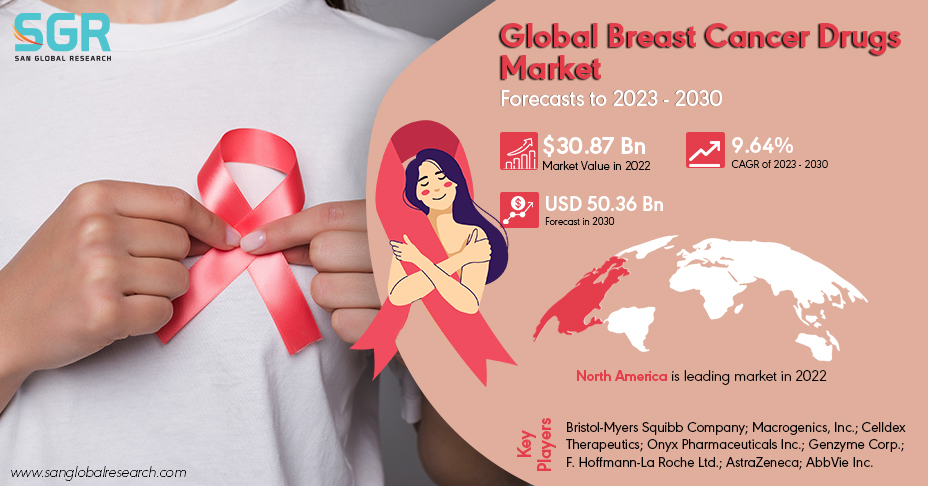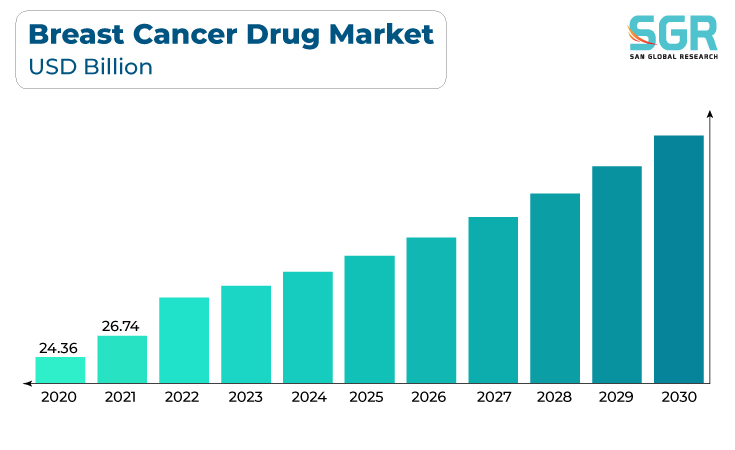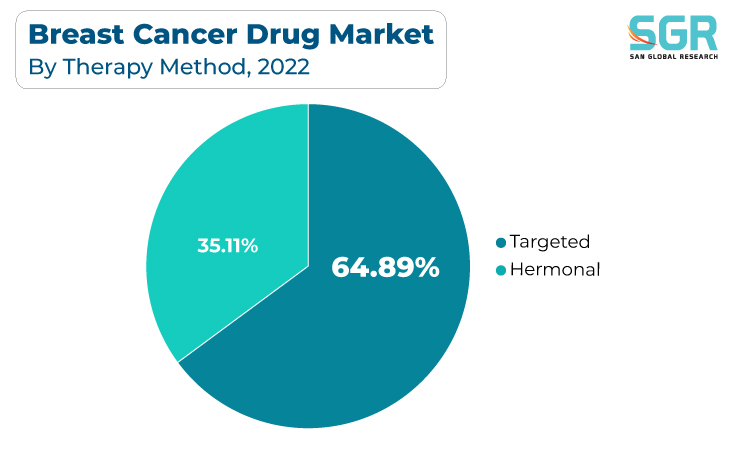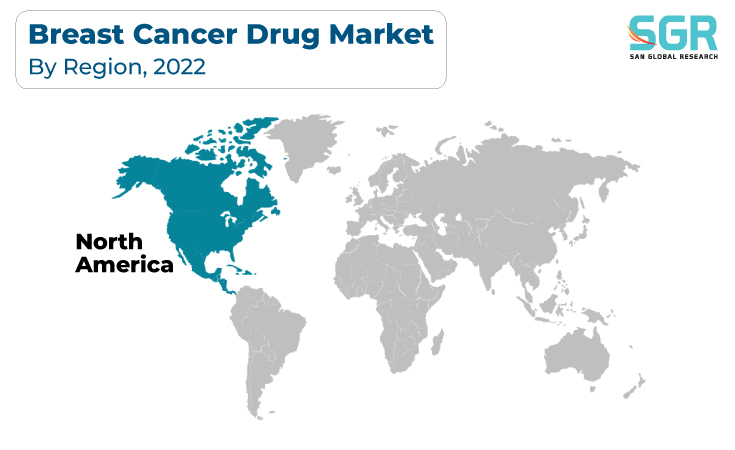Report Overview
The Breast Cancer Drugs was valued at 30.87 Billion in 2022 and expected to grow at CAGR of 9.64% over forecast period.

The rising incidence of breast cancer, combined with increased awareness and early detection, drives the demand for novel and effective treatments. Progress in molecular biology and genomics has resulted in the development of targeted therapies such as HER2 inhibitors and CDK4/6 inhibitors, which provide more precise treatment options with fewer side effects. Immunotherapies such as checkpoint inhibitors are also gaining popularity. In addition, ongoing clinical trials and research into combination therapies and personalized medicine are broadening the treatment options.

Collaborations between pharmaceutical companies and academic institutions, as well as regulatory incentives for drug development, promote innovation in the breast cancer drugs market. As healthcare systems around the world strive to improve patient outcomes and survival rates, the breast cancer drugs market remains active, providing new hope and therapeutic options for breast cancer patients.
Therapy Method Outlook
Based on Therapy Method, the Breast Cancer Drugs is segmented Targeted, Hormonal. Targeted segment accounted for largest share in 2022. The increasing prevalence of breast cancer, combined with a better understanding of molecular and genetic factors, drives the demand for more precise and effective treatments. HER2 inhibitors and CDK4/6 inhibitors, for example, are highly specific interventions that can reduce side effects and improve patient outcomes. Diagnostic advances, such as molecular profiling and genetic testing, allow for the identification of patients who are most likely to benefit from targeted treatments, facilitating personalized medicine approaches.

Several critical factors drive the hormonal breast cancer drugs market. Because hormone receptor-positive breast cancer accounts for a significant proportion of breast cancer cases, targeted hormonal therapies such as Tamoxifen, aromatase inhibitors, and other endocrine therapies are required. The rising prevalence of breast cancer, particularly among postmenopausal women, drives demand for these treatments.
Distribution Outlook
Based on Distribution, Breast Cancer Drugs is segmented into Hospital Pharmacies, Retail Pharmacies. Pharmacies accounted for largest share in 2022. Pharmacies play an important role in ensuring patient access to breast cancer drugs, and the rising global incidence of breast cancer emphasizes the importance of easily accessible and affordable treatments. Advances in targeted therapies, hormonal treatments, and immunotherapies are broadening the treatment options available to breast cancer patients, driving up demand for these drugs through pharmacy channels.
Retail pharmacies play an important role in ensuring patients' access to breast cancer drugs, and as the global incidence of breast cancer rises, so does the demand for these medications through easily accessible retail channels. Targeted therapies, hormonal treatments, and immunotherapies are expanding treatment options, and patients frequently rely on retail pharmacies for easy access to these medications.
Regional Outlook
North America is emerged as leading market for Breast Cancer Drugs in 2022. Several critical factors drive the North American breast cancer drugs market. The region's high breast cancer incidence, combined with a well-established healthcare infrastructure, drives demand for innovative and effective therapies. Advances in targeted therapies, hormonal treatments, and immunotherapies are broadening the treatment landscape, providing patients with more precise and less toxic options.
The growing emphasis on early detection and personalized medicine drives the adoption of these drugs even further. Furthermore, favorable reimbursement policies, robust research and development initiatives, and collaborations between pharmaceutical companies and research institutions are all contributing to the market's dynamic growth in North America. As healthcare systems strive to improve patient outcomes and survival rates, this market remains at the forefront of breast cancer treatment innovation and progress.

Breast Cancer Drugs Market Report Scope
| Report Attribute | Details |
| Market Value in 2022 | USD 30.87 Billion |
| Forecast in 2030 | USD 50.36 Billion |
| CAGR | CAGR of 9.64% from 2023 to 2030 |
| Base Year of forecast | 2022 |
| Historical | 2018-2021 |
| Units | Revenue in USD million and CAGR from 2023 to 2030 |
| Report Coverage | Revenue forecast, Industry outlook, competitive landscape, growth factors, and trends |
| Segments Scope | By Therapy Method, By Distribution |
| Regions Covered | North America, Europe, Asia Pacific, CSA and MEA |
| Key Companies profiled | Bristol-Myers Squibb Company; Macrogenics, Inc.; Celldex Therapeutics; Onyx Pharmaceuticals Inc.; Genzyme Corp.; F. Hoffmann-La Roche Ltd.; AstraZeneca; AbbVie Inc. |
Global Medical Devices Market, Report Segmentation
Breast Cancer Drug Market, By Therapy Method
- Targeted
- Hormonal
Breast Cancer Drug Market, By Distribution
- Hospital Pharmacies
- Retail Pharmacies
- Others
Breast Cancer Drug Market, Regional Outlook
- North America
- U.S.
- Canada
- Mexico
Europe
- Germany
- UK
- Spain
- Russia
- France
- Italy
Asia Pacific
- China
- Japan
- India
- South Korea
- Australia
CSA
- Brazil
- Argentina
MEA
- UAE
- Saudi Arabia
- South Africa

 Description
Description
 Table of Content
Table of Content
 Gera Imperium Rise,
Gera Imperium Rise,  +91 9209275355
+91 9209275355


